Genesis
The first domestically-produced armored car mass-produced for the Japanese army for service in China was the Type 92 Chiyoda. It followed on from the Type 87 armored car, which was based on locally-produced Wolseley British chassis, engine and components. At that time, the Army searched for a better protected vehicle with good off-road capabilities. These requirements led to a 6x6 design, similar to the later Type 93 Sumida. The prototype was ready in 1931 and successfully passed all trials. It was officially adopted as the Type 93 Chiyoda Armored Car, named after the builder, Chiyoda from Tokyo. In western literature, the corresponding designation is often "Aikoku Armored Car". This may be due to some 1932 Shanghai Incident papers which mentioned the "Aikoku-Koto", the "Public Party of Patriots", that helped fund the construction of these vehicles. It is also sometimes confused with the Type 90 Sumida.Design
The Chiyoda Motor Car Factory belonged to Tokyo Gasu Denki K. K., or Tokyo Gas and Electric Industries, and is nowadays named Hino Motors Ltd. It had previously produced the Model QSW 6-wheeled truck. In 1930, it was chosen to design the new army armored car, and submitted blueprints. The basic armor scheme was, in many ways, similar to that of the Type 87. However, the spoked wheels with pneumatic tires had been found to be too fragile and were replaced by disk wheels with fixed rubber bands. The hull was made of rolled homogeneous armor, possibly 6 mm (0.24 in) thick, enough to withstand shrapnel and light arms fire, and was riveted around a central frame.The compartmentalization was straightforward, with a frontal engine protected by armored shutters, a headlight protected by covers. The driver's compartment came after, with the driver on the left hand side and gunner taking place to his right, firing a standard light Type 92 machine-gun. The fighting compartment behind extended to the rear, with a revolving truncated conical turret. Three visor ports were placed along each side of the fighting compartment.
Access was granted through side doors for the driver's compartment and through rear doors for the fighting compartment. The turret had an AA mount on its frontal slope, and another MG was located in one of its side ports. Storage boxes were fastened over the rear axle mudguards. Normal armament provision comprised three Type 11 6.5 mm (0.25 in) machine-guns, replaced during WW2 by the more compact Type 91. The vehicle was propelled by a Wolseley 4-cyl gasoline engine, producing 75 hp for a power-to-weight ratio of 13.4 hp/t, enough for an estimated top speed of 60 km/h (37 mph) on road.
Active service
An estimated 200 Chiyoda armored cars were produced and participated in the 1932 Shanghai incident and subsequent IJA operations in China in the mid-1930s. They provided both infantry support and security duties in the captured regions. Starting in 1937, the Chiyoda were gradually replaced by the Type 97 Te-Ke tankette, which had far better mobility.Links
The Chiyoda on Wikipedia
Type 93 Chiyoda specifications |
|
| Dimensions (L-w-h) | 5 x 1.90 x 2.60 m (16.4 x 6.23 x 8.53 ft) |
| Total weight, battle ready | 5.6 tons (11,200 lbs) |
| Crew | 5 (commander, driver, 3 gunners) |
| Propulsion | Wolseley 4-cyl gas., 75 hp, 13.4 hp/t |
| Speed (road) | 60 km/h (37 mph) |
| Armor | 4 to 6 mm (0.16-0.24 in) |
| Armament | 3 x Type 11 or Type 91 6.5 mm (0.25 in) machine-guns |
| Total production | ~200 |
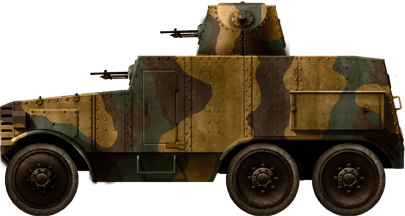
Unknown unit, China, 1930s. The illustrations shows the turret turned sideways.
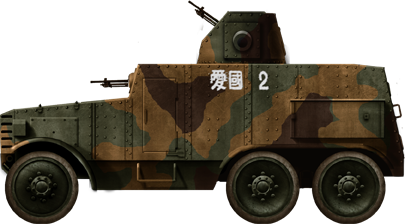
Unknown unit, China, 1930s, showing the turret turned forward, with its AA LMG.
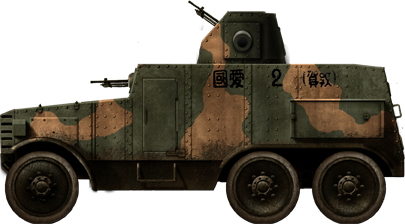
Unknown unit, China, 1930s.
Gallery
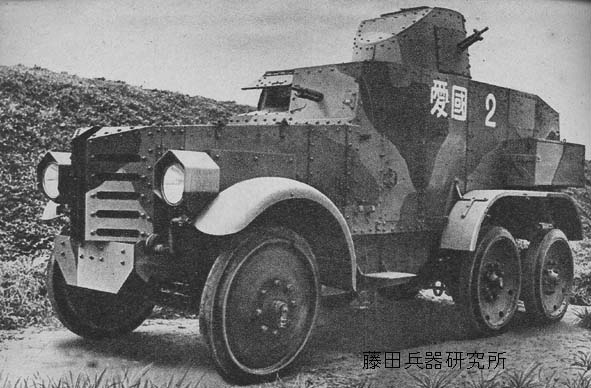
Notice the absence of an AA MG on the truncated sloped part of the turret, and the fixed Type 11 front MG - Credits: Ikazuchisen.wordpress.com.
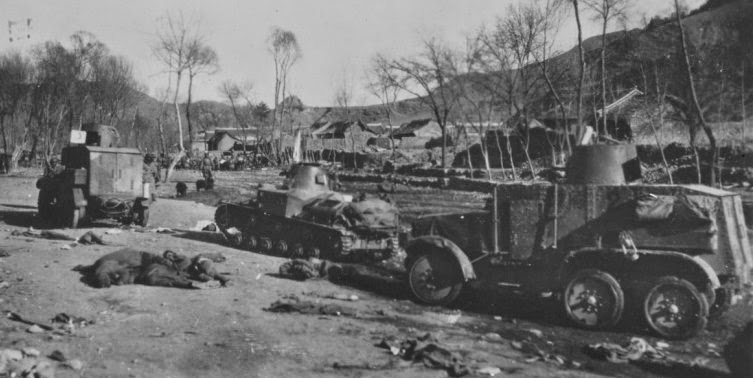
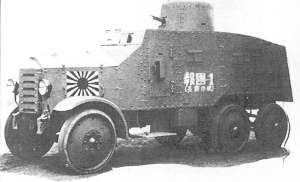
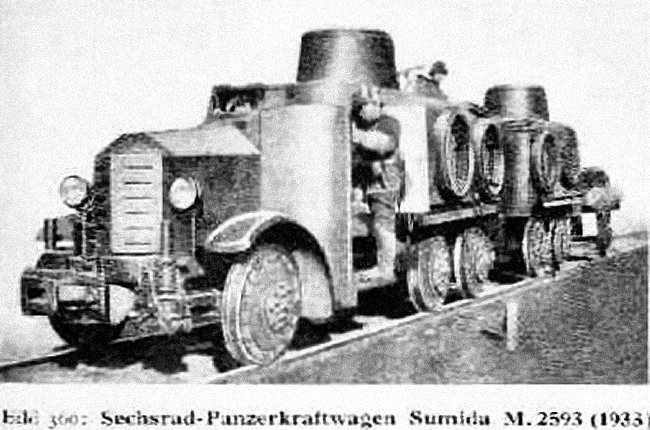

Get the Poster of the ww2 Imperial Japanese Army Tanks and support us !

WW2 Tanks




























WW2 tanks posters

All Tiger tanks liveries.

Panther liveries and variants

WW2 Armour - All tanks











Tanks aces and single tanks series

Find more there

Museums, Movies, Books & Games
The Tanks and Armor in pop culture
Tanks and armored vehicles in general are only really grasped when seen first person: The mass, the scale, it's all there. Explore also the way tanks were covered in the movie industry, in books and in video games.Movies:
Best tanks movie on warhistoryonline.com
On imdb.com
On bestsimilar.com/
miltours.com
liveabout.com/
watchmojo.com
Video Games:
pcgamesn.com
historyhit.com
levvvel.com
vg247.com/best-tank-games
mmobomb.com/
alienwarearena.com

